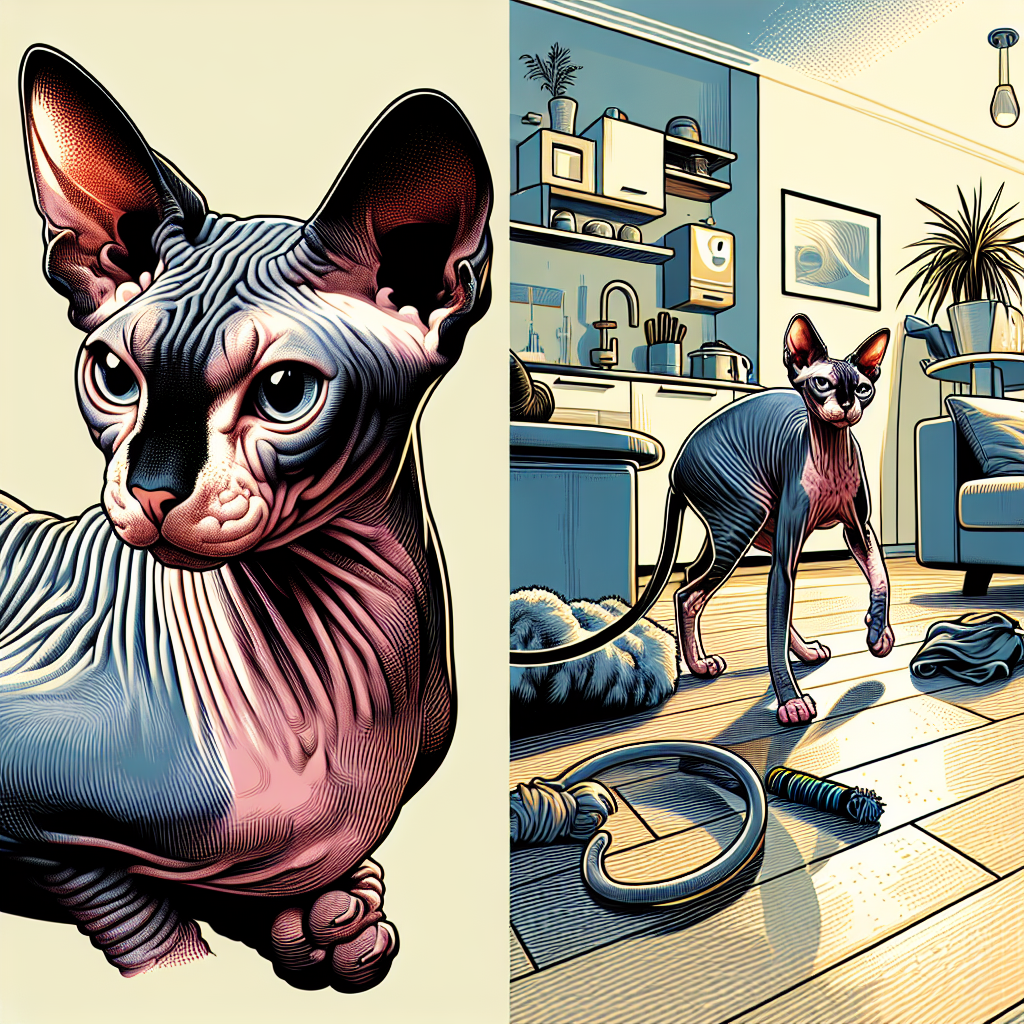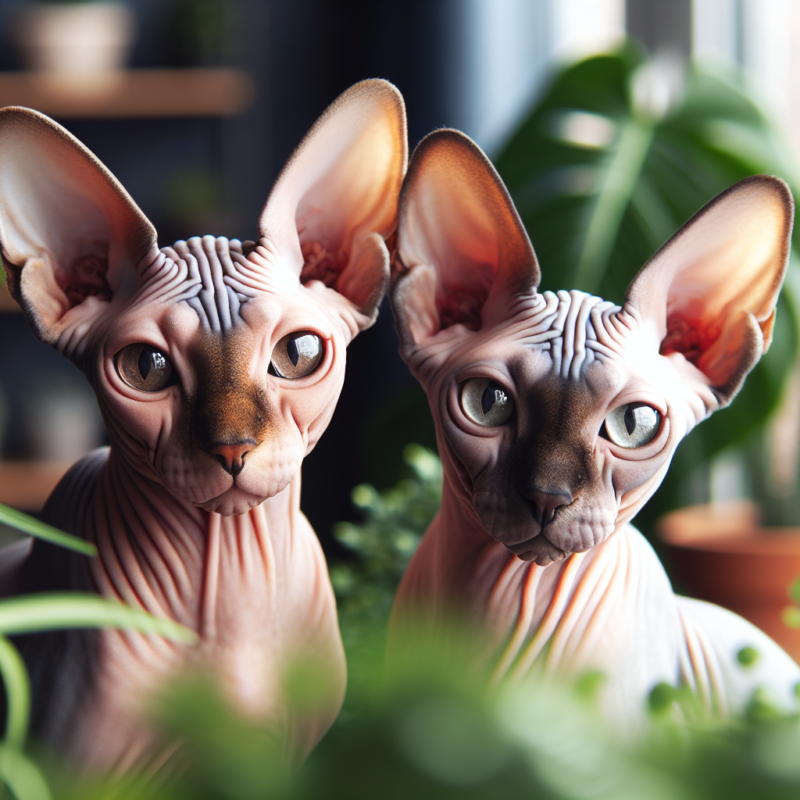Blog
are sphynx cats natural
The History and Origin of Sphynx Cats

Sphynx cats are a unique and fascinating breed that has captured the hearts of many cat lovers. With their hairless bodies and large ears, they stand out among other feline breeds. But have you ever wondered about the history and origin of these unusual cats? Are they a natural breed or a result of human intervention? In this article, we will delve into the history of Sphynx cats and uncover their true origins.
Contrary to popular belief, Sphynx cats are not a new breed. They have been around for centuries, with evidence of their existence dating back to ancient civilizations. The first recorded sighting of a hairless cat was in 1820 in Mexico, where a litter of hairless kittens was discovered. However, it wasn’t until the 1960s that the modern Sphynx breed was developed.
The modern Sphynx breed originated in Toronto, Canada, in 1966. A domestic cat named Elizabeth gave birth to a hairless kitten, which was named Prune. Prune was the result of a natural genetic mutation, and her owner, a cat breeder named Miltos Argentis, was intrigued by her unique appearance. He began breeding Prune with other domestic cats, and thus, the Sphynx breed was born.
However, it is essential to note that Prune was not the first hairless cat to be bred. In the early 1900s, a Russian breeder named Dmitrievich Kuznetsov also experimented with breeding hairless cats. He crossed a domestic cat with a hairless cat from Mexico, resulting in a breed known as the Don Sphynx. However, this breed did not gain much popularity and eventually died out.
The Sphynx breed gained recognition and popularity in the 1970s when it was officially recognized by cat associations. Breeders from different countries, including the United States, France, and the Netherlands, began breeding Sphynx cats, leading to the spread of the breed worldwide.
Despite their name, Sphynx cats are not entirely hairless. They have a fine layer of downy hair that gives them a soft and velvety feel. This hairless trait is a result of a recessive gene, and not all kittens in a litter will be hairless. Some may have a thin coat of fur, while others may have a full coat like a regular domestic cat.
The Sphynx breed has faced its fair share of controversy and criticism. Some people believe that the breed is unnatural and that the hairless trait is a result of genetic manipulation. However, this is not the case. Sphynx cats are a natural breed, and their hairlessness is a result of a natural genetic mutation. They are not genetically modified or altered in any way.
In fact, Sphynx cats are known to be a healthy and robust breed. They have a longer lifespan compared to other breeds, with an average lifespan of 14-16 years. They are also known to be affectionate and social cats, making them great companions for families and individuals alike.
In conclusion, Sphynx cats may have a unique and unusual appearance, but their history and origin are rooted in natural genetic mutations. From their humble beginnings in Toronto to their worldwide popularity today, these cats have come a long way. They are a testament to the wonders of nature and the beauty of diversity in the animal kingdom. So the next time you see a Sphynx cat, remember that they are a natural breed, and their hairlessness is just a small part of their fascinating history.
The Genetics and Physical Characteristics of Sphynx Cats
Sphynx cats are a unique and fascinating breed that has captured the hearts of many cat lovers. With their hairless bodies and large ears, they stand out among other feline breeds. But have you ever wondered if these cats are natural or if they were created through selective breeding? In this article, we will delve into the genetics and physical characteristics of Sphynx cats to answer the question: are Sphynx cats natural?
To understand the genetics of Sphynx cats, we must first look at their origins. Contrary to popular belief, Sphynx cats are not a result of genetic mutations or experiments. They were first discovered in Toronto, Canada in the 1960s, when a hairless kitten named Prune was born to a domestic shorthair cat. This kitten was then bred with other cats to create the Sphynx breed we know today.
The hairlessness of Sphynx cats is a result of a natural genetic mutation. This mutation affects the gene responsible for producing hair in cats, known as the KRT71 gene. This gene is responsible for the production of keratin, a protein that makes up hair, nails, and skin. In Sphynx cats, this gene is mutated, resulting in a lack of hair. This mutation is a recessive gene, meaning that both parents must carry the gene for it to be expressed in their offspring.
Aside from their hairlessness, Sphynx cats have other unique physical characteristics. They have large, bat-like ears that are set high on their heads. These ears are believed to be an adaptation to help regulate their body temperature, as they do not have fur to keep them warm. Sphynx cats also have a muscular and athletic body, with a prominent chest and abdomen. Their skin is wrinkled and soft to the touch, giving them a unique texture.
One of the most distinctive features of Sphynx cats is their large, expressive eyes. They have almond-shaped eyes that can come in a variety of colors, including blue, green, and gold. Their eyes are set wide apart, giving them a curious and alert expression. This is a result of selective breeding, as breeders have focused on creating cats with large, expressive eyes to enhance their unique appearance.
Despite their hairless appearance, Sphynx cats do have a thin layer of downy fur on their bodies. This fur is almost invisible to the naked eye and can vary in color from white to black. This fur is not enough to keep them warm, which is why Sphynx cats are often seen cuddled up in warm blankets or seeking out warm spots in the house.
In terms of health, Sphynx cats are generally a healthy breed. However, their lack of fur makes them more susceptible to certain health issues, such as sunburn and skin infections. It is important for Sphynx cat owners to take extra precautions to protect their cats from the sun and to regularly clean their skin to prevent infections.
In conclusion, Sphynx cats are a natural breed that originated from a genetic mutation. Their hairlessness is a result of this mutation, and their other unique physical characteristics are a result of selective breeding. While they may require some extra care due to their lack of fur, Sphynx cats are a healthy and fascinating breed that continues to capture the hearts of many. So, the next time you see a Sphynx cat, you can confidently say that they are indeed a natural and unique feline breed.

